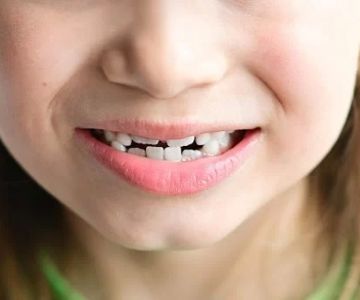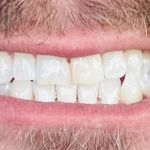- understanding-safe-teeth-whitening - Understanding Safe Teeth Whitening at Home
- common-risks-and-how-to-avoid-them - Common Risks and How to Avoid Them
- effective-and-safe-methods - Effective and Safe Methods for At-Home Teeth Whitening
- real-life-experiences - Real-Life Experiences and Tips
- when-to-seek-professional-help - When to Seek Professional Help
Understanding Safe Teeth Whitening at Home
When people search for how to whiten teeth safely at home without damage or sensitivity, they often imagine quick fixes, but the reality is that lasting results come from understanding the process. Whitening works by removing surface stains and lightening the enamel’s natural color. However, if done incorrectly, it can harm enamel and irritate gums. The goal is to balance effectiveness with safety so that your smile becomes brighter without long-term consequences.
Many people assume that all whitening products work the same, but in truth, each method—whether strips, gels, or natural remedies—affects teeth differently. The safest approaches use low-concentration whitening agents, limited contact time, and protective measures to shield gums. By being patient and consistent, you can achieve a noticeable improvement without causing sensitivity or enamel erosion.
Common Risks and How to Avoid Them
1. Enamel Erosion
Overuse of strong whitening products can erode enamel, which cannot be naturally regenerated. Once enamel wears down, teeth become more prone to cavities and staining. Avoid using high-strength whitening gels without professional guidance.
2. Tooth Sensitivity
One of the most common complaints after whitening is increased sensitivity to hot and cold. This happens when dentin becomes exposed or irritated. Choosing products labeled for sensitive teeth, and spacing out treatments, helps reduce this risk.
3. Gum Irritation
Bleaching agents can burn or irritate gum tissue if they leak from trays or strips. A proper fit for whitening trays and careful application prevents unnecessary contact with soft tissues.
Effective and Safe Methods for At-Home Teeth Whitening
1. Whitening Toothpaste with Low Abrasiveness
Some whitening toothpastes use gentle polishing agents to remove surface stains without damaging enamel. This is a slow but safe method for gradual improvement, especially when paired with good daily brushing habits.
2. Custom Whitening Trays from a Dentist
While the treatment is done at home, custom trays from a dental professional ensure even application and minimal gum exposure. Using dentist-recommended whitening gel at a safe concentration offers both effectiveness and protection.
3. Natural Whitening Boosters
Baking soda, when used sparingly, can help lift surface stains without scratching enamel. Oil pulling with coconut oil is another gentle option that some people find effective. These methods may not produce instant results but are generally low-risk.
Real-Life Experiences and Tips
Consider the case of Emily from Texas, who wanted whiter teeth for her wedding. Instead of using high-strength store kits, she opted for dentist-made trays and a gradual 10% carbamide peroxide gel. Over six weeks, she achieved a natural brightness without a single day of sensitivity. Her story is a reminder that slow and steady wins when it comes to whitening safely.
Some social media trends, like using activated charcoal or lemon juice, can seem tempting but often cause more harm than good. The acid from lemons erodes enamel, and abrasive powders can scratch the tooth surface. Sticking to clinically proven methods is always a safer bet.
When to Seek Professional Help
If your teeth have deep intrinsic stains, discoloration from medication, or signs of enamel damage, professional whitening may be a better choice. Dentists can use stronger agents under controlled conditions to minimize risk. They can also suggest alternatives such as veneers or bonding if whitening alone won’t achieve the desired result.
For anyone unsure about which method to choose, visiting a trusted provider—such as those recommended by Family Dentistry Online—can ensure both safety and satisfaction. A customized plan will always outperform a one-size-fits-all solution, especially for people concerned about sensitivity and enamel health.







 Smiles Divine Dental4.0 (25 review)
Smiles Divine Dental4.0 (25 review) Dr. Jody Z. Bardash, D.M.D.4.0 (29 review)
Dr. Jody Z. Bardash, D.M.D.4.0 (29 review) Dr. Daniel S. Fife, DDS4.0 (31 review)
Dr. Daniel S. Fife, DDS4.0 (31 review) Charleston Dental Associates4.0 (440 review)
Charleston Dental Associates4.0 (440 review) Dental Associates of Delaware-Brandywine4.0 (611 review)
Dental Associates of Delaware-Brandywine4.0 (611 review) Spencer Dental & Braces4.0 (459 review)
Spencer Dental & Braces4.0 (459 review) The Importance of Oral Health Education During Pregnancy for a Healthy Pregnancy
The Importance of Oral Health Education During Pregnancy for a Healthy Pregnancy Best Tips for Brushing Your Teeth Properly for Healthy Gums: Essential Techniques for Oral Health
Best Tips for Brushing Your Teeth Properly for Healthy Gums: Essential Techniques for Oral Health Why Skipping Dental Checkups Can Lead to Bigger Oral Health Problems
Why Skipping Dental Checkups Can Lead to Bigger Oral Health Problems Advantages of Porcelain Dental Restorations
Advantages of Porcelain Dental Restorations How Can Diabetes Cause Tooth and Gum Problems? Preventing and Managing Oral Health Issues
How Can Diabetes Cause Tooth and Gum Problems? Preventing and Managing Oral Health Issues Healthy Habits for Promoting Good Oral Health and Hygiene: Tips for a Healthy Smile
Healthy Habits for Promoting Good Oral Health and Hygiene: Tips for a Healthy Smile